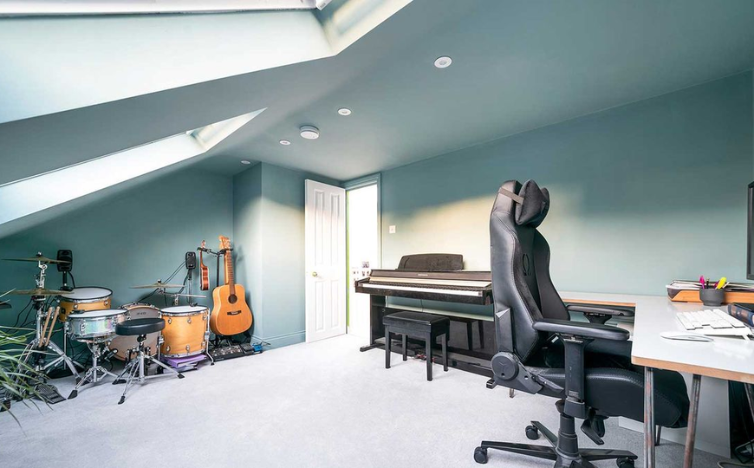Lofts are versatile spaces, often used as bedrooms, offices, or entertainment areas. However, their open design and proximity to roof structures can make them prone to noise disturbances. Whether you’re dealing with external sounds like traffic or internal noise from other parts of the house, soundproofing your loft can transform it into a quiet, comfortable retreat. Here’s how to do it effectively.
1. Identify the Noise Sources
Before starting, determine where the noise is coming from. Is it airborne noise (e.g., voices, music) or impact noise (e.g., footsteps, vibrations)? External noise, such as rain or wind, may also be a factor. Understanding the source will help you choose the right soundproofing methods.
2. Insulate the Loft Floor
The floor is often the primary entry point for noise in a loft. To soundproof it:
- Add Mass: Use dense materials like mass-loaded vinyl (MLV) or soundproof underlay beneath the flooring.
- Decouple: Install a floating floor system to separate the loft floor from the structure below, reducing vibration transfer.
- Seal Gaps: Use acoustic sealant to fill any cracks or gaps in the floorboards.
3. Soundproof the Walls and Ceiling
Lofts often have sloped ceilings and thin walls, which can amplify noise. To address this:
 Install Acoustic Panels: These absorb sound waves and reduce echo.
Install Acoustic Panels: These absorb sound waves and reduce echo.- Use Drywall with Soundproofing Properties: Opt for soundproof drywall or add a second layer of drywall with Green Glue in between.
- Add Insulation: Use acoustic insulation materials like mineral wool or fiberglass within the wall and ceiling cavities.
4. Upgrade the Windows and Doors
Windows and doors are common weak points for noise leakage. To improve their soundproofing:
- Install Double-Glazed Windows: These have two layers of glass with an air gap, reducing noise penetration.
- Use Weatherstripping: Seal gaps around doors and windows with weatherstrips to block sound.
- Add Heavy Curtains or Blinds: Soundproof curtains can absorb noise and improve insulation.
5. Address the Roof
If your loft is directly under the roof, external noises like rain or birds can be a problem. Consider:
- Adding Roof Insulation: Use materials like spray foam or rigid foam boards to dampen sound.
- Installing Acoustic Tiles: These can be added to the interior roof surface to absorb noise.
6. Use Soft Furnishings to Absorb Sound
Incorporate soft materials into your loft decor to further reduce noise:
- Rugs and Carpets: These absorb impact noise and reduce echo.
- Furniture: Upholstered furniture, like sofas and chairs, can help dampen sound.
- Decorative Acoustic Panels: These can double as wall art while improving sound quality.
7. Seal All Gaps and Cracks
Even small gaps can let in significant noise. Use acoustic caulk or sealant to fill gaps around pipes, vents, and electrical outlets. Pay special attention to areas where walls meet floors or ceilings.
8. Consider Professional Help
If DIY methods aren’t sufficient, consult a soundproofing specialist. They can assess your loft and recommend advanced solutions like resilient channels or soundproofing membranes.
Contact Muhammad Shaheen Carpentry at 971 55 219 6236, and discover the transformative science of soundproofing for your space.
Conclusion
Soundproofing a loft requires a combination of techniques to address different noise sources. By insulating floors, walls, and ceilings, upgrading windows and doors, and using soft furnishings, you can create a quieter, more peaceful space. Whether you’re working, sleeping, or relaxing, a soundproofed loft will enhance your comfort and productivity.

